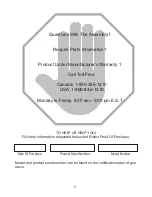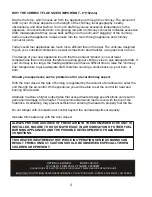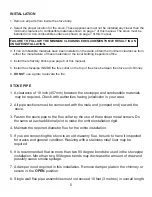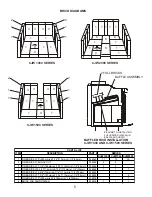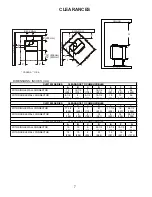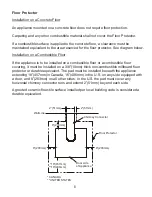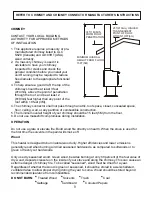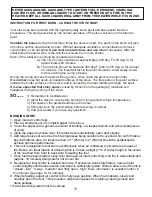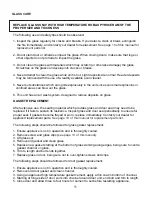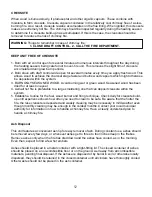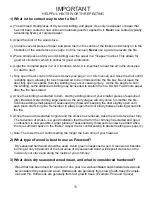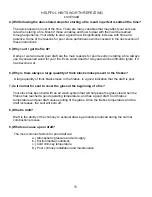
CREOSOTE
When wood is burned slowly, it produces tar and other organic vapours. These combine with
moisture to form creosote. Creosote vapours condense in the relatively cool chimney flue of a slow-
burning fire. As a result, creosote residue accumulates on the flue lining. When ignited, this creosote
makes an extremely hot fire. The chimney should be inspected regularly during the heating season
to determine if a creosote build-up has accumulated. If this is the case, the creosote should be
removed to reduce the risk of chimney fire.
WARNING:
Things to remember in case of chimney fire:
1. CLOSE DRAFT CONTROL. 2. CALL THE FIRE DEPARTMENT.
KEEP UNIT FREE OF CREOSOTE
1. Burn with air control open for several minutes at numerous intervals throughout the day during
the heating season, being careful not to over-fire unit. This removes the slight film of creosote
accumulated during low burn periods.
2. Burn stove with draft control wide open for several minutes every time you apply fresh wood. This
allows wood to achieve the charcoal stage faster and burns wood vapours which might otherwise
be deposited within the system.
3. BURN ONLY SEASONED WOOD. Avoid burning wet or green wood. Seasoned wood has been
dried for at least one year.
4. A small hot fire is preferable to a large smoldering one that can deposit creosote within the
system.
5. Establish a routine for the fuel, wood burner and firing technique. Check daily for creosote build-
up until experience shows how often you need to clean to be safe. Be aware that the hotter the
fire, the less creosote is deposited and weekly cleaning may be necessary in mild weather even
though monthly cleaning may be enough in the coldest months. Contact your local municipal
authority for information on how to handle a chimney fire. Have a clearly understood plan to
handle a chimney fire.
Ash Disposal
This unit features a convenient ash lip for easy removal of ash. During constant use, ashes should
be removed every few days, or whenever ashes get to three to four inches deep in the firebox.
Remove ashes only when the fire has died down and the ashes have cooled, as in the morning.
Even then, expect to find a few hot embers.
Ashes should be placed in a metal container with a tight-fitting lid. The closed container of ashes
should be placed on a non-combustible floor or on the ground, well away from all combustible
materials, pending final disposal. If the ashes are disposed of by burial in soil or otherwise locally
dispersed, they should be retained in the closed container until all cinders have thoroughly cooled.
Other waste should not be placed in the ash container.
12


